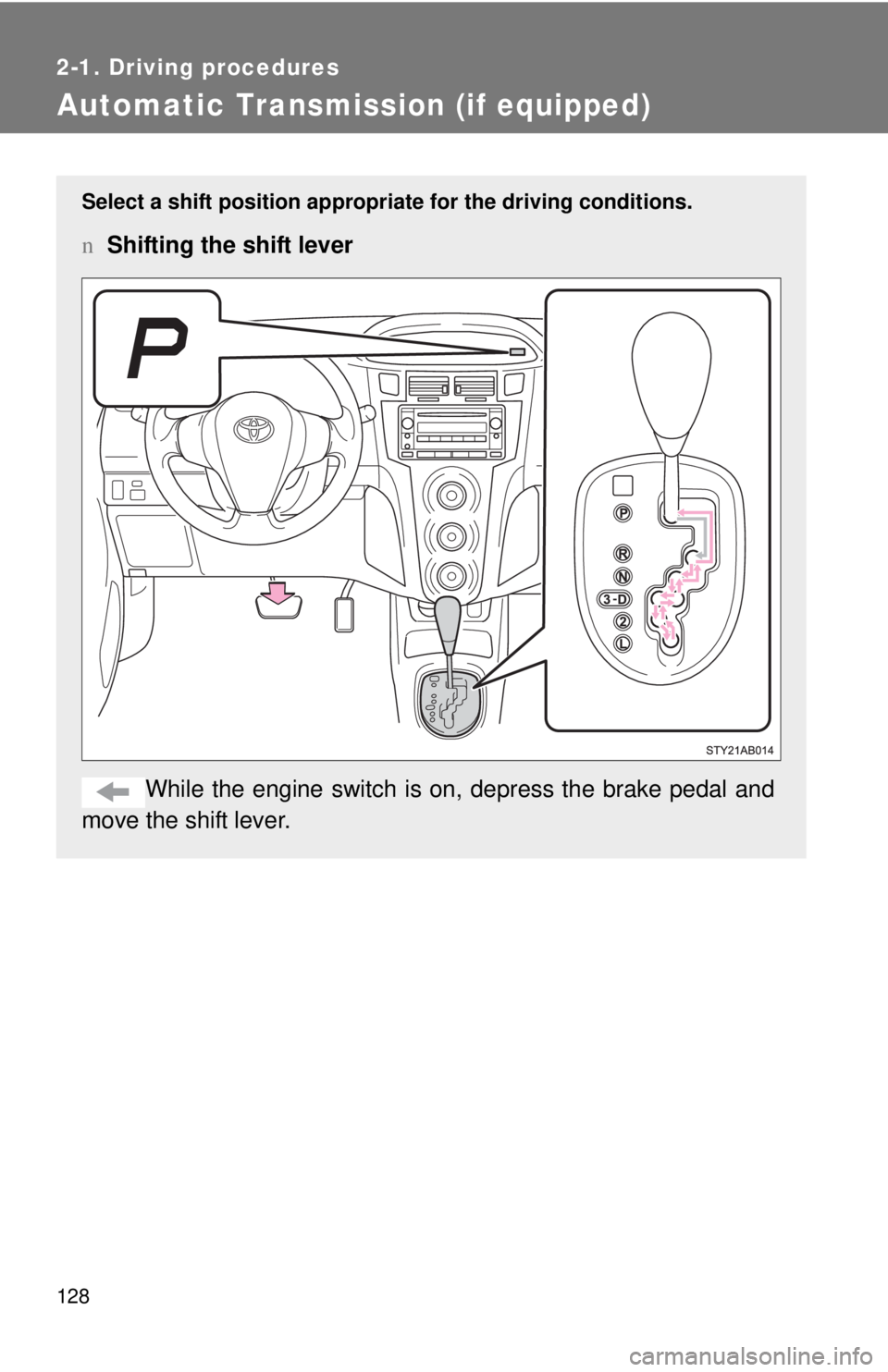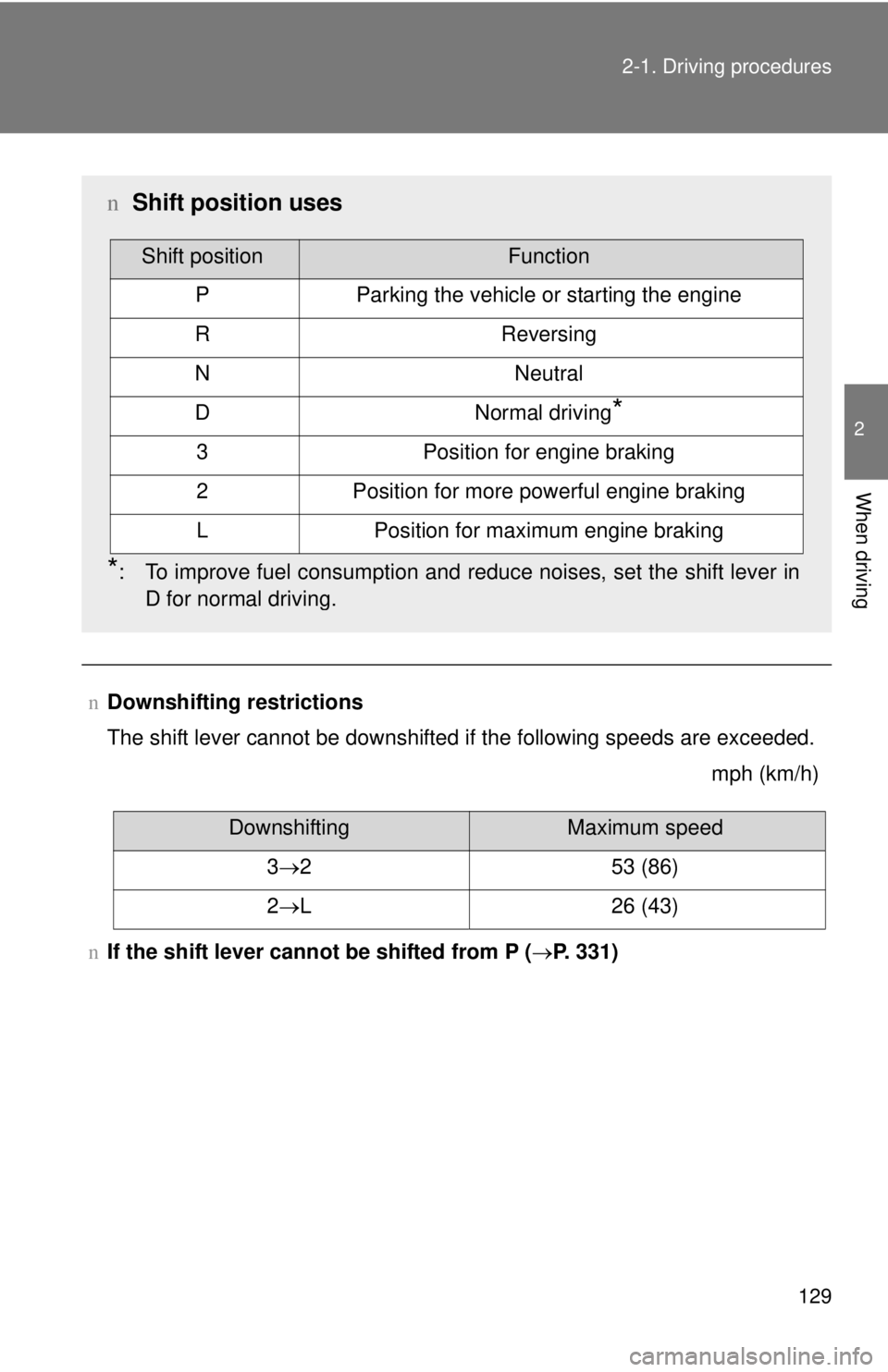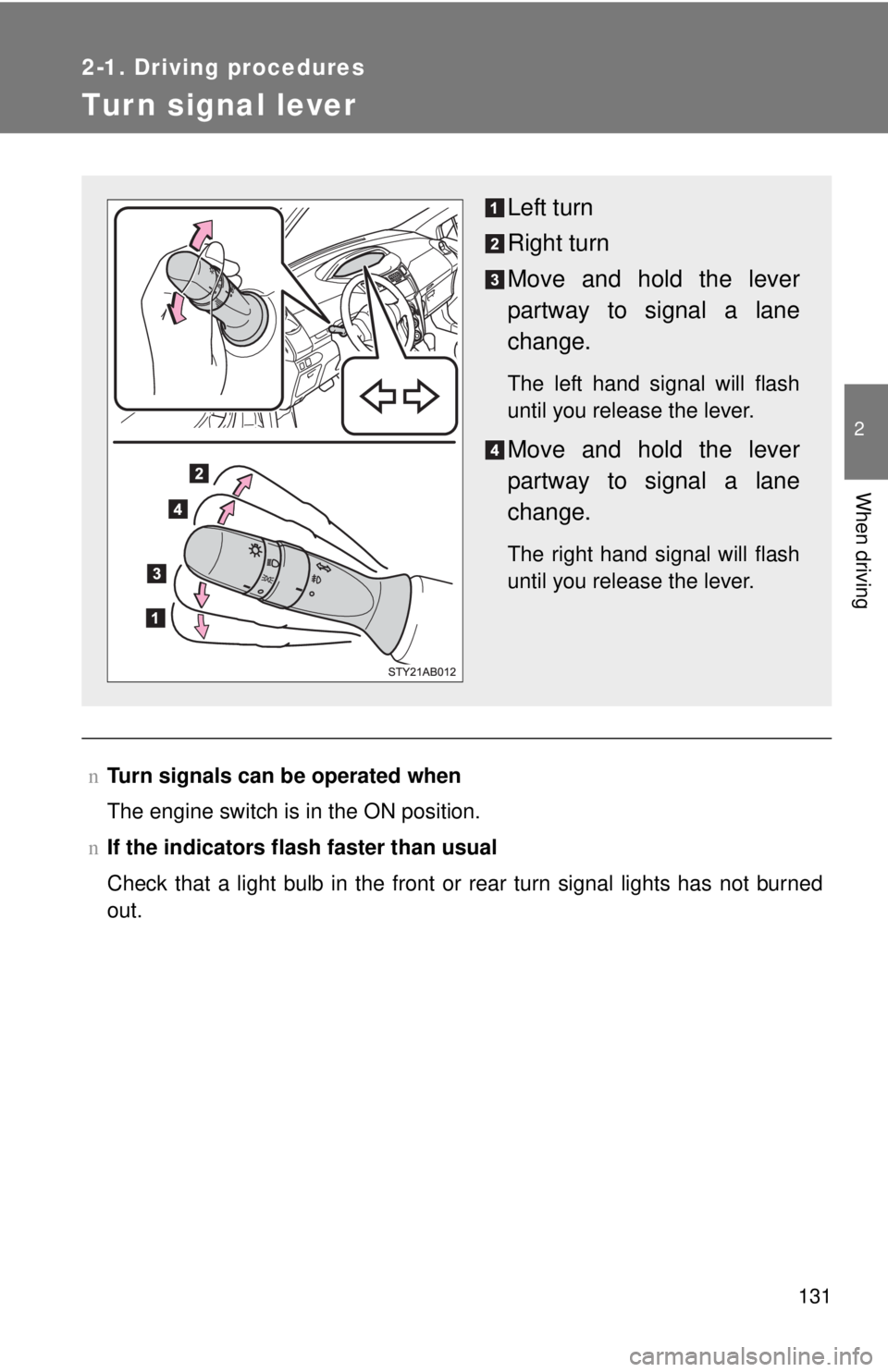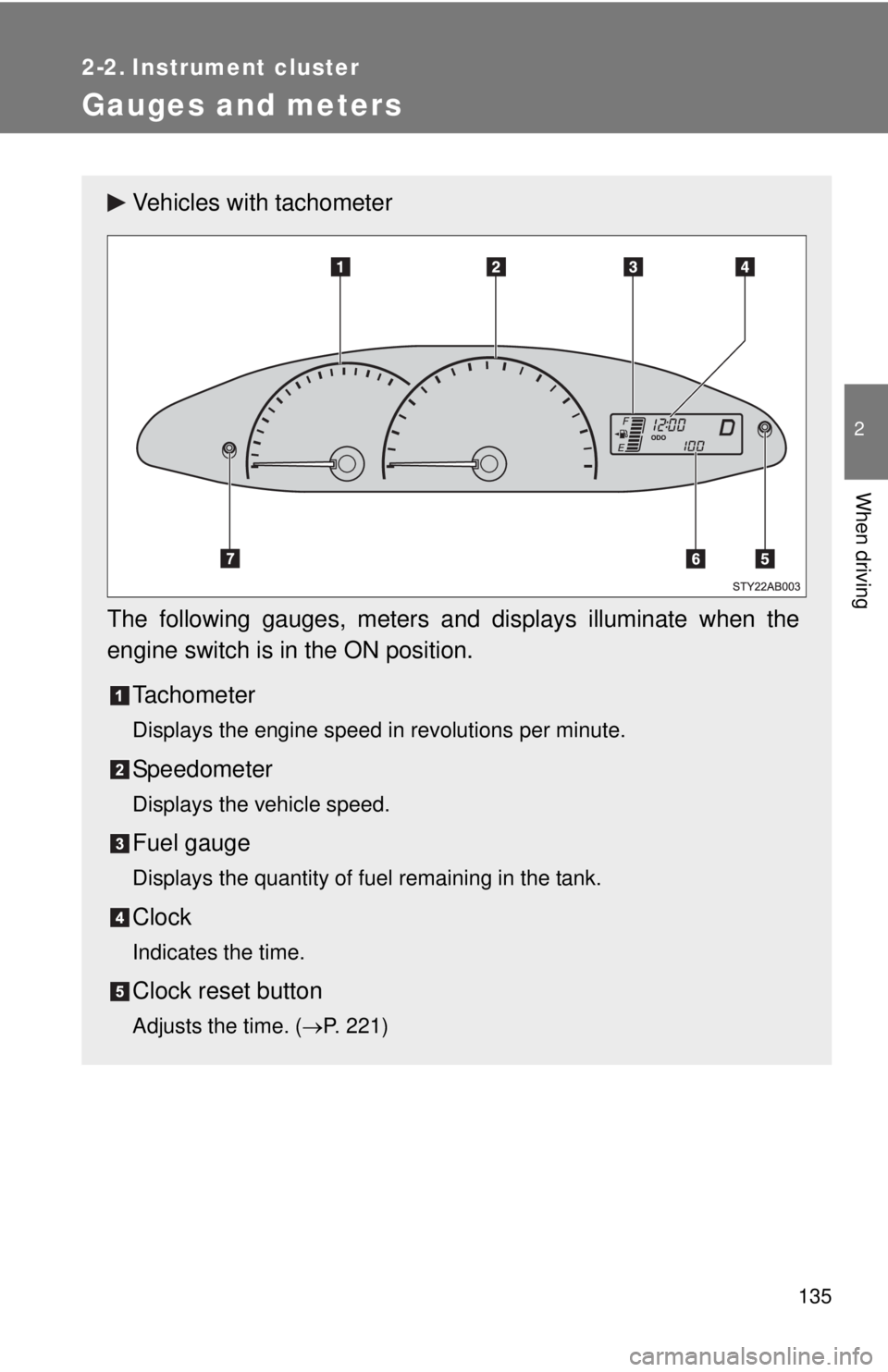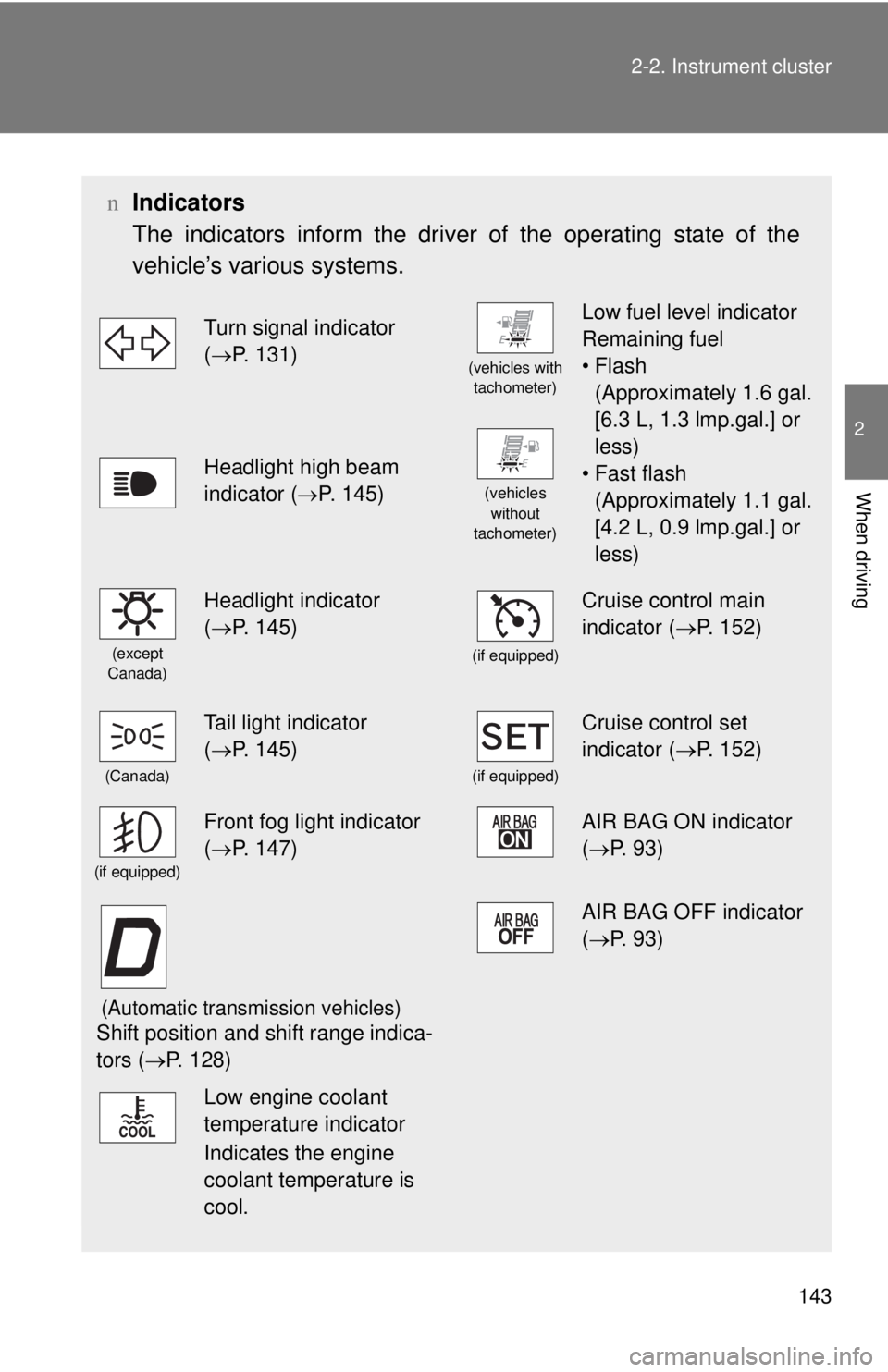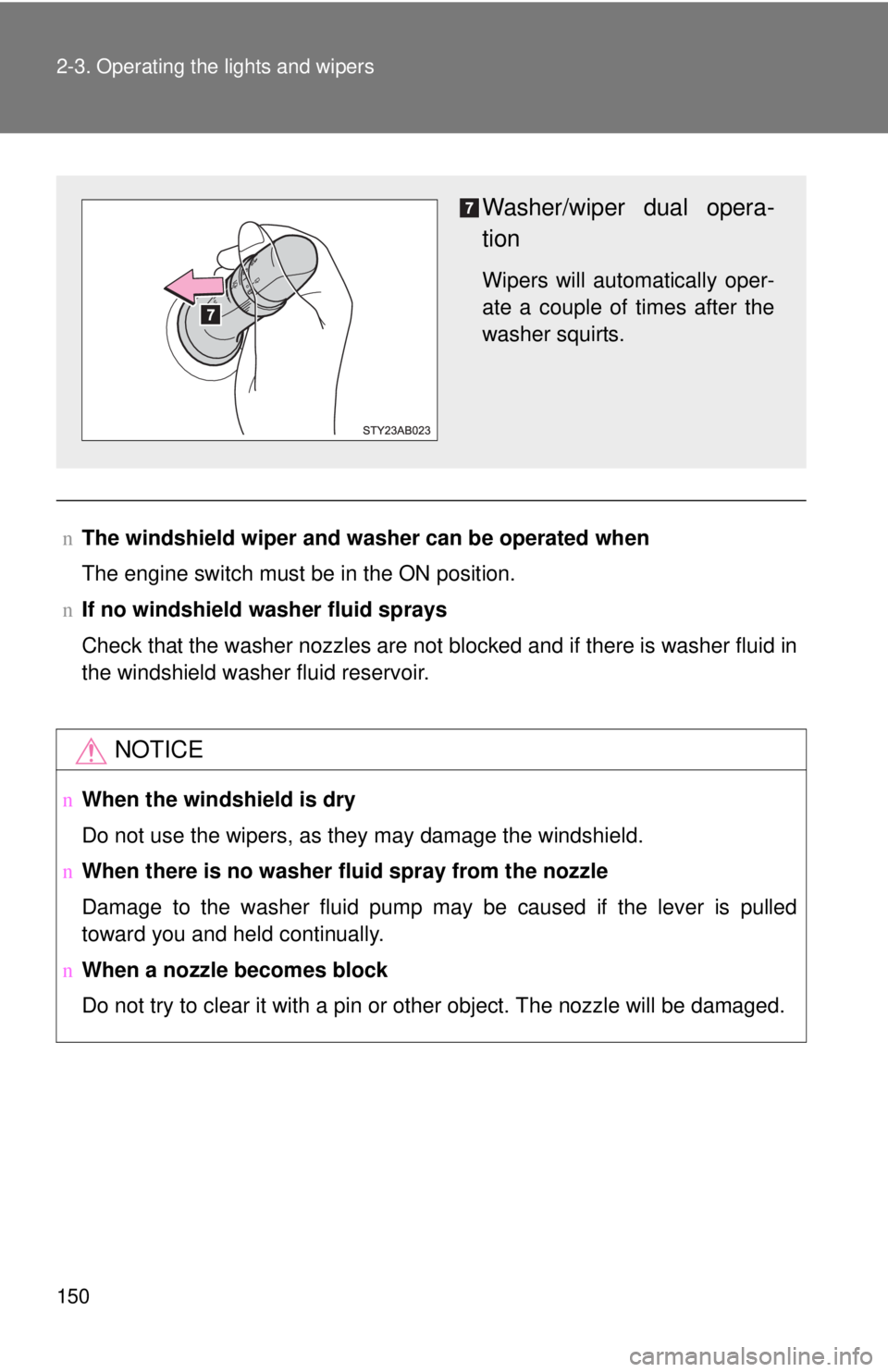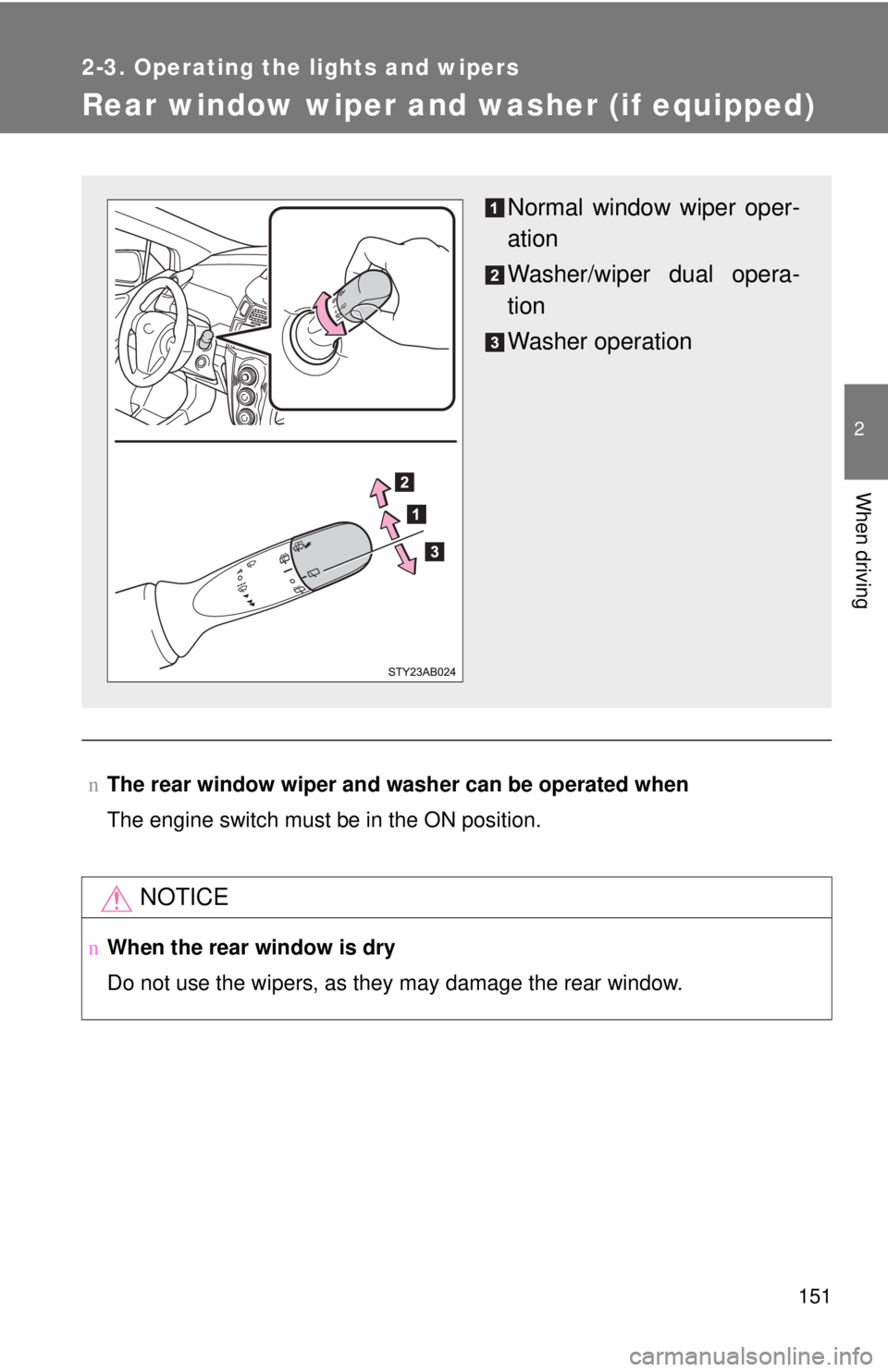TOYOTA YARIS HATCHBACK 2009 Owner's Guide
YARIS HATCHBACK 2009
TOYOTA
TOYOTA
https://www.carmanualsonline.info/img/14/59276/w960_59276-0.png
TOYOTA YARIS HATCHBACK 2009 Owner's Guide
Page 141 of 402
128
2-1. Driving procedures
Automatic Transmission (if equipped)
Select a shift position appropriate for the driving conditions.
nShifting the shift lever
While the engine switch is on, depress the brake pedal and
move the shift lever.
Page 142 of 402
129
2-1. Driving procedures
2
When driving
n
Downshifting restrictions
The shift lever cannot be downshifted if the following speeds are exceeded.
mph (km/h)
n If the shif
t lever cannot be shifted from P ( →P. 331)
nShift position uses
*: To improve fuel consumption and reduce noises, set the shift lever in
D for normal driving.
Shift positionFunction
PParking the vehicle or starting the engine
RReversing
NNeutral
DNormal driving*
3Position for engine braking
2Position for more powerful engine braking
LPosition for maximum engine braking
DownshiftingMaximum speed
3 →2 53 (86)
2 →L 26 (43)
Page 144 of 402
131
2-1. Driving procedures
2
When driving
Turn signal lever
nTurn signals can be operated when
The engine switch is in the ON position.
n If the indicators flash faster than usual
Check that a light bulb in the front or rear turn signal lights has not burned
out.
Left turn
Right turn
Move and hold the lever
partway to signal a lane
chan
ge.
The left hand signal will flash
until you release the lever.
Move and hold the lever
partway to signal a lane
chan
ge.
The right hand signal will flash
until you release the lever.
Page 148 of 402
135
2
When driving
2-2. Instrument cluster
Gauges and meters
Vehicles with tachometer
The following gauges, meters and displays illuminate when the
engine switch is in the ON position.Tachometer
Displays the engine speed in revolutions per minute.
Speedometer
Displays the vehicle speed.
Fuel gauge
Displays the quantity of fuel remaining in the tank.
Clock
Indicates the time.
Clock reset button
Adjusts the time. ( →P. 221)
Page 153 of 402
140 2-2. Instrument cluster
NOTICE
nTo prevent damage to the engine and its components
lDo not let the indicator needle of the tachometer enter the red zone, which
indicates the maximum engine speed.
l The engine may be overheating if the high engine coolant temperature
warning light comes on. In this case, immediately stop the vehicle in a safe
place, and check the engine after it has cooled completely. (
→P. 337)
Page 156 of 402
143
2-2. Instrument cluster
2
When driving
n
Indicators
The indicators inform the driver of the operating state of the
vehicle’s various systems.
Turn signal indicator
( →P. 131)
(vehicles with
tachometer)
Low fuel level indicator
Remaining fuel
•Flash
(Approximately 1.6 gal.
[6.3 L, 1.3 lmp.gal.] or
less)
• Fast flash
(Approximately 1.1 gal.
[4.2 L, 0.9 lmp.gal.] or
less)
Headlight high beam
indicator ( →P. 145)
(vehicles
without
tachometer)
(except
Canada)
Headlight indicator
( →P. 145)
(if equipped)
Cruise control main
indicator ( →P. 152)
(Canada)
Tail light indicator
( →P. 145)
(if equipped)
Cruise control set
indicator ( →P. 152)
(if equipped)
Front fog light indicator
( →P. 147)AIR BAG ON indicator
( →P. 93)
(Automatic transmission vehicles)
Shift position and shift range indica-
tors ( →P. 128)
AIR BAG OFF indicator
(→P. 93)
Low engine coolant
temperature indicator
Indicates the engine
coolant temperature is
cool.
Page 157 of 402
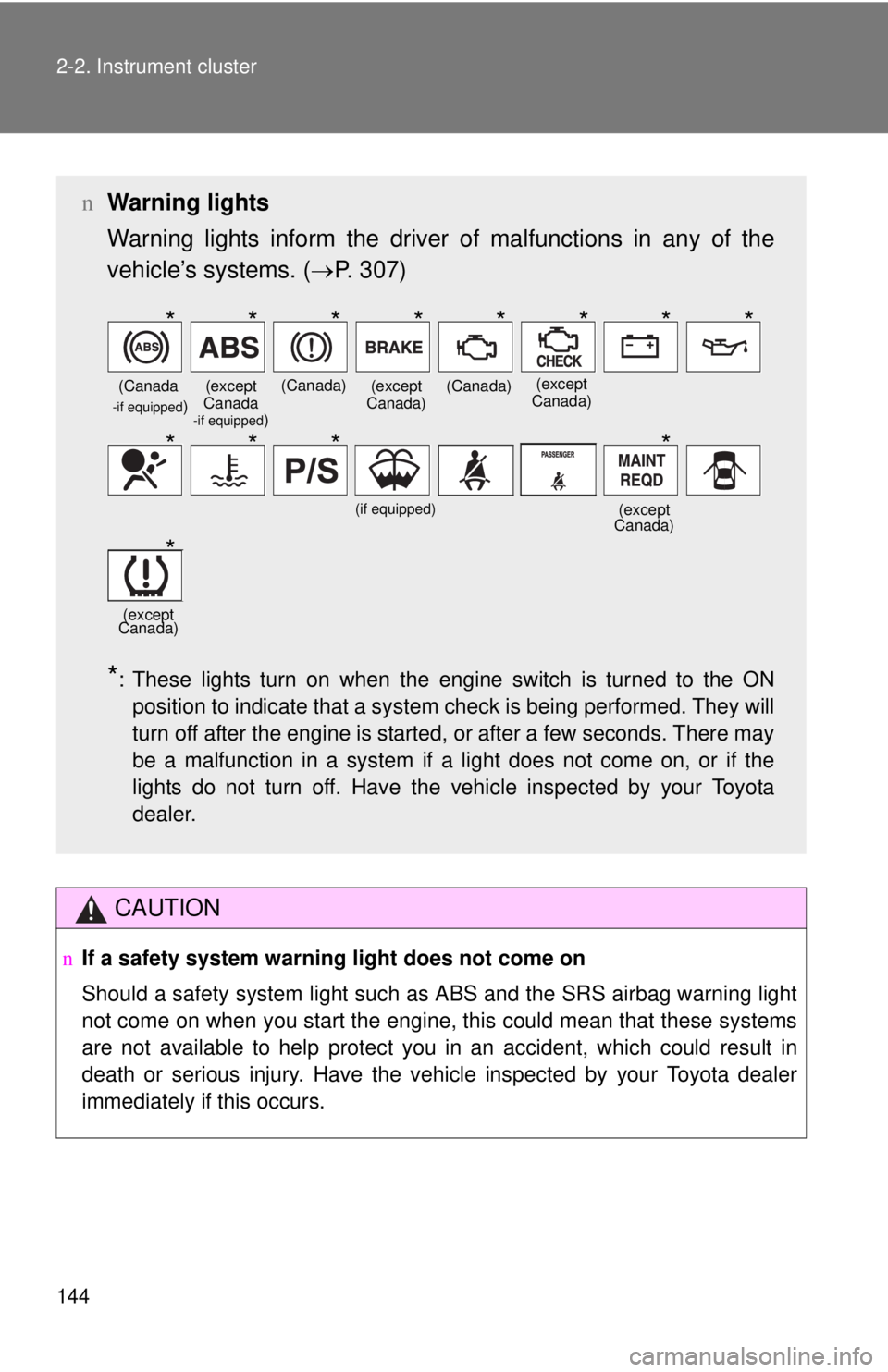
144 2-2. Instrument cluster
CAUTION
nIf a safety system warning light does not come on
Should a safety system light such as ABS and the SRS airbag warning light
not come on when you start the engine, this could mean that these systems
are not available to help protect you in an accident, which could result in
death or serious injury. Have the vehicle inspected by your Toyota dealer
immediately if this occurs.
n Warning lights
Warning lights inform the driver of malfunctions in any of the
vehicle’s systems. ( →P. 3 0 7 )
*: These lights turn on when the engine switch is turned to the ON
position to indicate that a system check is being performed. They will
turn off after the engine is started, or after a few seconds. There may
be a malfunction in a system if a light does not come on, or if the
lights do not turn off. Have the vehicle inspected by your Toyota
dealer.
(Canada -if equipped)(except
Canada
-if equipped)
(Canada)(except
Canada)(Canada)(except
Canada)
(if equipped)(except
Canada)
(except
Canada)
********
****
*
Page 159 of 402
146 2-3. Operating the lights and wipers
nDaytime running light system (if equipped)
To make your vehicle more visible to other drivers, the headlights turn on
automatically (at a reduced intensity) whenever the engine is started and the
parking brake is released. Daytime r unning lights are not designed for use at
night.
n L
ight reminder buzzer
A buzzer sounds when the key is removed and the driver's door is opened
while the light
s are turned on.
NOTICE
nTo prevent battery discharge
Do not leave the lights on longer than necessary when the engine is not run-
ning.
Page 163 of 402
150 2-3. Operating the lights and wipers
nThe windshield wiper and washer can be operated when
The engine switch must be in the ON position.
n If no windshield washer fluid spra
ys
Check that the washer nozzles are not blocked and if there is washer fluid in
the windshield washer fluid reserv
oir.
NOTICE
nWhen the windshield is dry
Do not use the wipers, as they may damage the windshield.
n When there is no washer fluid spray from the nozzle
Damage to the washer fluid pump may be caused if the lever is pulled
toward you and held continually.
n When a nozzle becomes block
Do not try to clear it with a pin or other object. The nozzle will be damaged.
Washer/wiper dual opera-
tion
Wipers will automatically oper -
ate a couple of times after the
washer squirt
s.
Page 164 of 402
151
2-3. Operating the lights and wipers
2
When driving
Rear window wiper and washer (if equipped)
nThe rear window wiper and washer can be operated when
The engine switch must be in the ON position.
NOTICE
nWhen the rear window is dry
Do not use the wipers, as they may damage the rear window.
Normal window wiper oper-
ation
Washer/wiper dual opera-
tion
Washer operation
